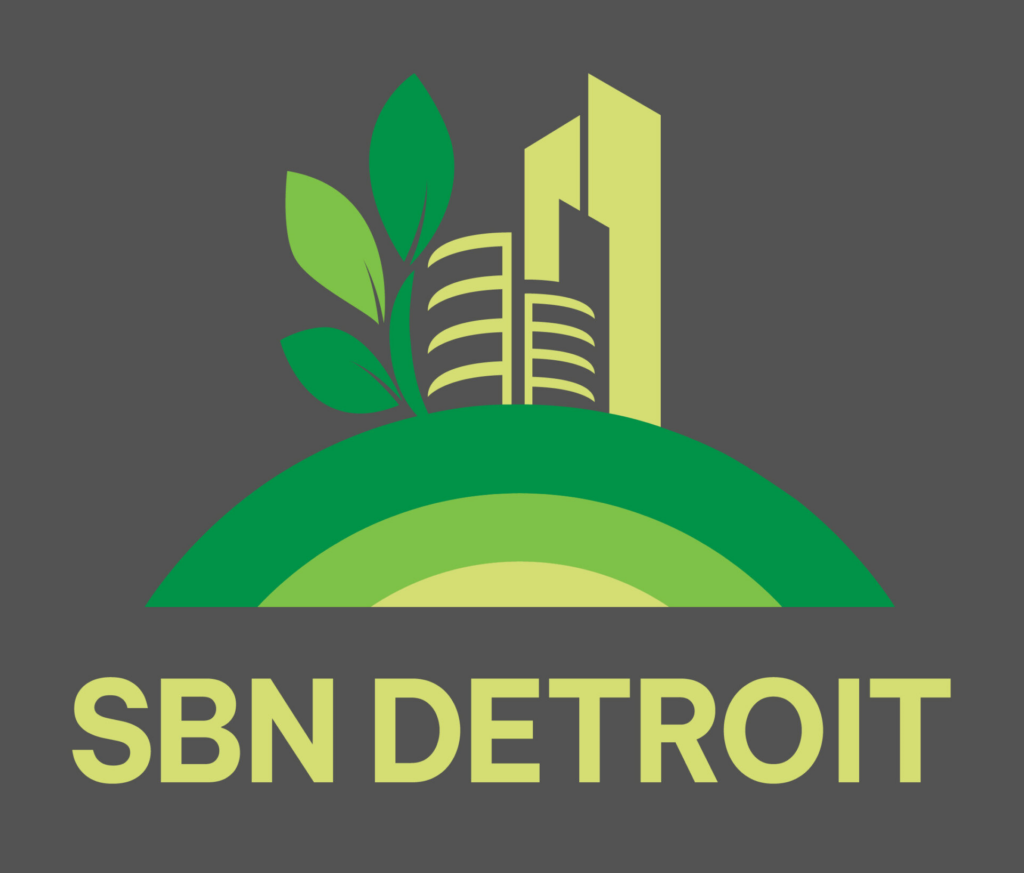Preparing for the AI Energy Era
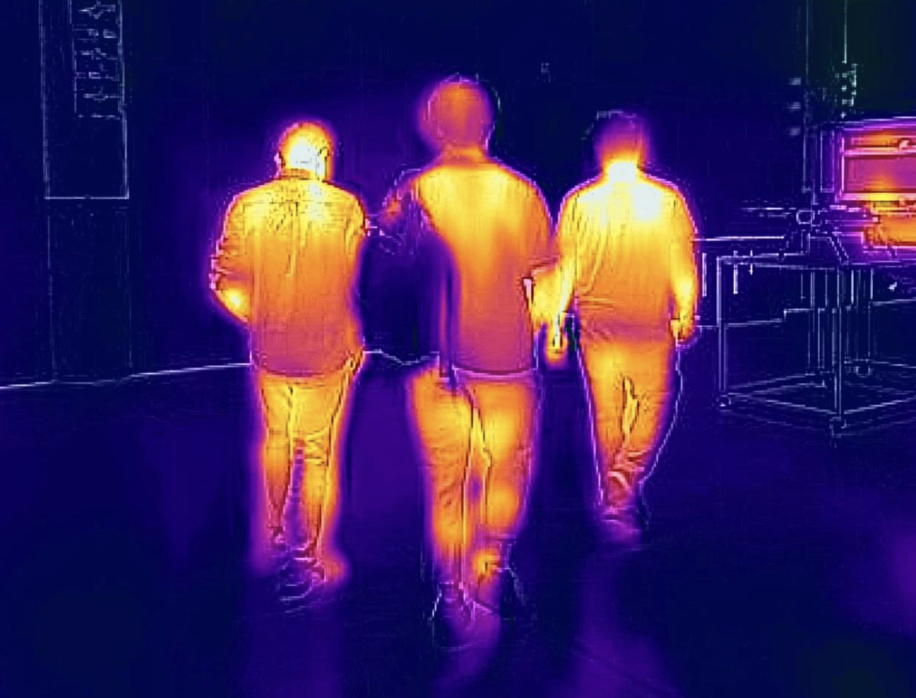
ThermoVerse is a Detroit-based urban innovation startup founded by engineer and researcher Shantonio Birch. The company’s work centers on advanced thermal energy storage and people-focused building technologies that reduce waste, stabilize indoor environments, and free up electrical capacity. SBN Detroit interviewed Birch about the future of grid resiliency, energy equity, and why Southeast Michigan is positioned to lead in next-generation smart city innovation. Q: What is the impetus behind the work you do? A: ThermoVerse is focused on one of the biggest stability issues we face: how do we allow high-energy users like data centers to coexist in communities without competing for the same energy we need to heat homes and businesses? Our goal is to reduce the largest source of energy consumption in buildings — the HVAC system — so more energy is available at the panel. We want to empower building owners to turn their buildings into value-added assets instead of liabilities. Q: What are the biggest challenges buildings face? A: It all comes down to energy. There are many issues in the built environment, and I think of buildings like the human body — everything is connected. We talk about indoor air quality and comfort, but when you look at economic development, the thing that will get this nation moving is our relationship to energy. Right now, poor power quality is being distributed through the grid and into homes, affecting how our devices and systems function. When you layer on additional demand from advanced manufacturing, EVs, and AI data centers, we’re going to experience more brownouts and blackouts. That’s the biggest challenge buildings are facing: how do we allow this huge economic wave — fueled by AI — without compromising communities? Q: What technologies or approaches will have the greatest impact on reducing energy waste in buildings? A: Anything simple. The biggest barrier for new technology is integration, so solutions have to be straightforward. I believe thermal energy storage is a major opportunity. It will play a huge role in meeting grid-resiliency needs. Renewables like solar are valuable, but they don’t solve the smart-growth challenge we face. We need growth that strengthens the grid rather than stressing it. Q: How does better thermal management translate into healthier or safer living conditions? A: I found my way into this field because I experienced heat stress in my own townhouse apartment during the pandemic while studying at U-M. I was close to heat stroke. We’re seeing more and more cases of heat stress in hospitals and communities now. Better thermal management helps reduce those risks. Beyond the health impact, there’s the economic side. Many people are spending a significant portion of their income on utilities. Improved thermal performance means lower bills, better living conditions, and more resilience as heat waves become more frequent. Q: What role can innovation play in addressing energy inequity — especially in aging housing stock and low-income communities? A: I’ll say this boldly: most existing building technologies were not designed with equity or people in mind. They were built around the question, “How do we cool this space so we can have people here?” At ThermoVerse, we flip that script. We build around the people first. People-centric technologies will play a huge role in reducing energy demand and supporting smart growth so AI and other advancements can coexist with communities instead of overwhelming them. Q: What makes Southeast Michigan a meaningful place to build and test smart-city and energy-efficiency technologies? A: If you look at major cities like Chicago or New York, Detroit stands out. We have the greatest potential for smart-city innovation because our built environment is underdeveloped in certain areas, making the starting point ideal. We can embed smart infrastructure into buildings more easily to enable fluid energy transfer between the grid and the built environment. There’s also a level of openness and willingness here that you don’t always find in cities that are already fully built out. Q: What barriers still slow down the adoption of innovative building technologies, even when they’re proven to reduce waste? A: Integration. That is the barrier for most proven technologies. We also have split incentives in the built environment. Building owners are our customers, but their customers — the tenants — want a better user experience. Then you have utilities, with power-purchase agreements and rate structures that complicate adding new technologies. And finally, the contractors. They’re the ones installing the equipment. If they don’t understand how a new technology fits into existing systems, it won’t be integrated. Heat pumps are a good example — contractor knowledge gaps can slow down adoption, even when the technology is solid. Q: For building owners looking to modernize, where should they focus first to get the biggest energy impact? A: If you’re going to modernize, you have to measure. Establish a baseline. Invest in sensors and meters to understand your energy use down to the unit. You can’t manage what you don’t measure. Once you have visibility, you can start thinking about the ecosystem of technologies that will create the biggest short-term and long-term impact. Ultimately, we need buildings — and neighborhoods — where energy flows bi-directionally between the grid and the built environment. Q: Looking ahead, what do you believe will define the next chapter of energy innovation in Detroit and more broadly? A: Detroit has a deep understanding of how communities and businesses coexist. The next evolution of the built environment here will be people-based — designed around the experience of living and working well. Nationally, we’re at a very interesting moment in energy. For years, the “energy transition” has been politicized, and we’re now looking at it through an economic lens driven by AI. The biggest opportunity ahead is doubling our energy production to meet the demands of AI data centers. The White House recently launched the Genesis Mission — the largest investment in strengthening our national energy reserve to prepare for the new digital era. There’s an enormous opportunity for young people to enter this
Building a Circular Future
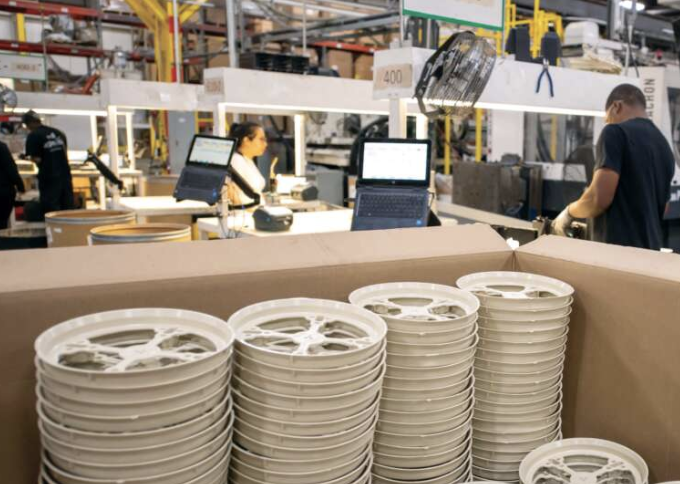
In the manufacturing world, sustainability is increasingly defined not just by recycling, but by what kind of recycling. For PolyFlex Products, based in Farmington Hills and part of Nefab Group, the future lies in creating closed-loop systems where materials are reused for equal or higher-value purposes — not simply “downcycled” into lower-grade goods. PolyFlex, which designs and manufactures reusable packaging and material handling solutions for the automotive and industrial sectors, is investing in circularity across its operations. The company’s goal is to ensure that plastics and packaging materials stay in circulation longer, retain value at end-of-life, and contribute to a more resilient supply chain. SBN Detroit interviewed Director of Sustainability Richard Demko, about the shift from downcycling to true circularity, the technical and cultural changes required, and what this evolution could mean for Michigan’s workforce and manufacturing economy. Q: What does “recycling for equivalent or higher use” actually look like in practice — and why is moving away from downcycling so important? A: Circularity, at its core, means manufacturing, recovering, and returning materials at end-of-life back into feedstock form to create something new. It’s about closing the loop — but we have to start with the basics: improving capture rates and diverting more material from landfills. The challenge is that recovery alone doesn’t guarantee success. One of the biggest barriers we face is the lack of demand for recycled feedstock. You can pour your heart into developing a fantastic recycling process, but if there’s no market for that material, the effort falls short. That’s why we need collaborative extended producer responsibility (EPR) systems that stabilize demand and make recycled regrind valuable, instead of punitive frameworks that simply point fingers. No single stakeholder can shoulder all the responsibility for circularity. It’s an ecosystem. Downcycling, meanwhile, is more like an off-ramp — it keeps materials out of landfills for a time but doesn’t truly close the loop. The goal is to return materials to their highest possible value so they can re-enter the economy at an equivalent or higher use. Q: In automotive supply chains, what opportunities do you see for keeping plastics and industrial packaging materials in circulation longer? A: Analyzing packaging fleets at the component level and asking what can be reused, what needs to be redesigned, and what truly has reached end-of-life is a great place to start. Pallets and lids are good examples. Often, those parts can be redeployed across multiple programs if you plan for it upfront. Traditionally, packaging was treated as disposable — once a product launched, everything associated with it ended up scrapped. Now we’re seeing a paradigm shift. Companies are designing for recyclability and reusability from the start. Some are even creating universal packaging platforms that can be shared across product lines. I like to say that carbon has become a kind of currency. When companies invest in reusable packaging, the return isn’t always measured dollar-for-dollar — it’s measured in carbon reduction. Those gains directly support broader sustainability goals, and, in some cases, they even help manufacturers comply with regulations that exempt circular packaging streams from waste classifications. At PolyFlex, we’ve already helped our customers divert several million pounds of plastic from landfills simply by applying design-for-recyclability principles and re-use strategies. It’s a shift toward smarter design — and it’s happening fast. Q: What are the biggest technical challenges in turning used materials back into high-value products — and where is the industry making progress? A: The biggest technical hurdle is consistency. Regrind blends vary depending on their source, and that variability can affect performance. The key is to manage it intentionally — introduce recycled feedstocks in small increments, fine-tune the process, and ramp up gradually. On the positive side, both equipment and operators are getting smarter. We’re seeing tremendous innovation in process technology that allows manufacturers to work with higher recycled content without sacrificing quality or throughput. Q: How do you design a product from the beginning with its second or third life in mind? A: It starts with identifying components that can become standards — like pallet dimensions or lid configurations that can be used across multiple applications. The more we can standardize, the more opportunities we create for re-use. It also requires a macro mindset. Instead of thinking in one product lifecycle, you think in systems. If you’re shipping a component from Detroit to Arizona, ask what can be sent back in that same flow. Can the packaging be refilled, reused, or repurposed? That kind of circular thinking transforms how supply chains operate. Material choice is another major factor. Corrugated packaging might last only a few trips, while plastics designed with the right impact resistance, UV stability, and weather tolerance can circulate for years. It’s about matching the material to its environment and expected lifespan. Q: Are there specific materials where circularity is advancing fastest — and others where it’s still a struggle? A: Rigid plastics — things like pallets, totes, and containers — are advancing the fastest because they’re high volume and easier to process. PET, HDPE, and polypropylene are particularly strong candidates because they can be reprocessed multiple times. Where we still struggle is with single-use, multi-layer packaging — the snack wrappers, films, and laminates that mix materials for barrier protection or freshness. Those layers make recycling extremely difficult. There’s exciting research happening in that space, but large-scale solutions are still developing. Q: What does a more circular plastics industry mean for jobs and skills in Southeast Michigan? A: It means opportunity — but it also means we need education. There isn’t a single university or technical program I know of that teaches recycling as part of its core curriculum. You can find polymer science programs but not recycling operations or circular systems. Training people for this industry is critical. If you lose a skilled recycling technician, you can’t just hire a replacement from a temp agency. It takes months or even years to become proficient. And with plastics recycling, mistakes are costly — something as simple as
Building a People-First Economy in Michigan
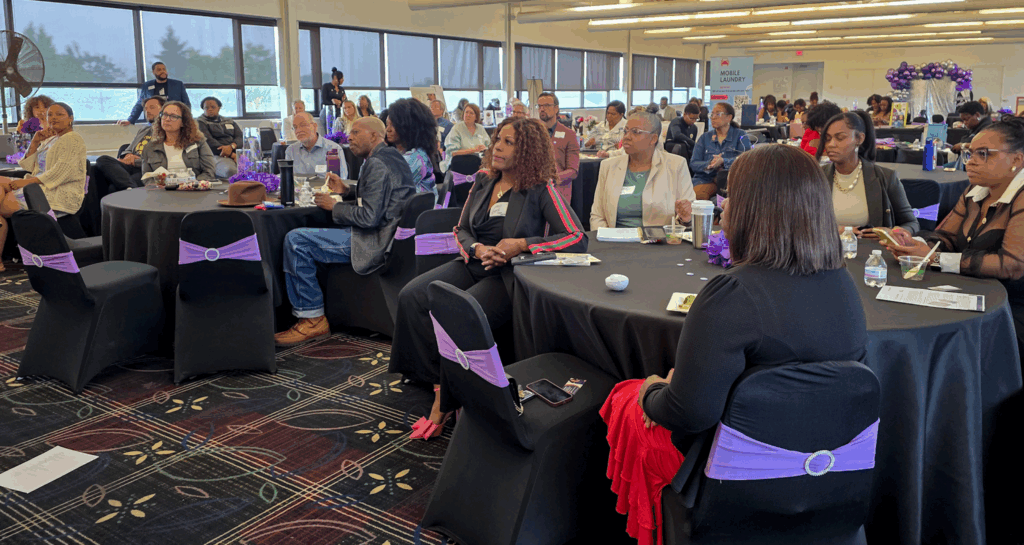
People First Economy is a statewide organization working to redefine what success in business looks like—where profitability, community wellbeing, and environmental stewardship go hand in hand. Through education, measurement tools, and peer networks, the nonprofit helps Michigan businesses integrate social and environmental values into everyday operations. SBN Detroit interviewed Carlos Martinez, president of People First Economy, about shifting business mindsets, the growing connection between sustainability and profitability, and why Michigan is uniquely positioned to lead the next economy. Q: Tell me about People First Economy and how it came to be. A: At its core, People First Economy is about building tools and support networks that help shape an economy where people and environmental well-being are essential. We never shy away from the idea of the triple bottom line — businesses can absolutely make a healthy profit while supporting the communities they serve and the environment they depend on. We now serve more than 500 businesses statewide, from early-stage entrepreneurs to established companies. Much of our work centers on education and foundational business practices, but always through the lens of sustainability and inclusion. We started as Local First, which focused on supporting locally owned companies. Over time, our mission expanded to include environmental and social impact — because local economies thrive when businesses are sustainable, equitable, and community-driven. Q: As you work with cohorts, what mindset shifts do you see as companies move toward more inclusive, sustainable practices? A: The biggest shift happens when leaders stop viewing sustainability as an add-on and start seeing it as core to their business strategy. Once companies begin measuring their social and environmental impact, they start acting more proactively. Sustainability becomes part of how they innovate, manage costs, and create value. For larger or more mature businesses, this often leads to a broader cultural shift. They begin evaluating suppliers, employees, and even competitors differently — not as transactions, but as part of a shared ecosystem. That mindset unlocks collaboration and innovation. When companies realize that solving sustainability challenges can actually drive profitability, real transformation begins. Q: What tangible benefits do companies see when they measure their social and environmental impacts? A: One of the biggest is employee engagement. When people see that their company is making a positive difference, they feel connected to something larger than their job. We also see efficiency gains, cost savings from smarter resource management, and stronger brand loyalty. But there’s another layer — storytelling. When businesses can measure their impact, they can share those results in powerful ways. It becomes part of their identity. For example, Walker-Miller Energy Services and Cascade Engineering in Michigan both demonstrate how sustainability and inclusion strengthen brand reputation and build employee pride. More companies are now including impact reporting in their marketing or RFP materials because it helps them stand out. When you can prove your values, you open doors to new opportunities. A Harvard study recently found that purpose-driven companies embedding sustainability into their culture outperform the market nearly tenfold over two decades. That connection between purpose and profit is real. The business impact strategies create lasting value when they’re grounded in a deep understanding of a company’s financial metrics. Q: How do you encourage businesses to think about long-term value rather than short-term profit? A: This is always an evolving conversation, especially in challenging economic times. The key is understanding that we’re all interconnected. A diverse, resilient business community helps protect against national downturns and future disruptions. Companies that invest early in sustainable, innovative practices often find themselves better positioned when the market shifts. Patagonia is a good example — years ago, they were experimenting with regenerative agriculture, which at the time seemed niche. Today, it’s a standard for sustainable production. When you build trust, brand loyalty, and local supply chains, it creates stability. Over the long term, that stability translates to profitability. Q: Detroit and Michigan have a rich manufacturing legacy. How is the people-first model reshaping the regional narrative around business and jobs? A: Detroit is unique because it already has a strong foundation of community-based leadership. Other states look to Detroit as a model for what’s possible when innovation and inclusion go hand in hand. We’re still early in the process of embedding this mindset more broadly, but the momentum is there. When we opened applications for our latest sustainability cohort, we had more than 50 applicants for just 20 spots — which tells us there’s real appetite for this work. Our broader goals include connecting early-stage businesses with those further along in their sustainability journey — through tools, mentorship, and experiences like conferences where they can see what’s possible. It’s about building a community of practice. The more we connect those dots, the stronger our local economy becomes. Q: If you were advising a mid-size company in Detroit today, what’s the best first step toward embedding people-first practices? A: Start by understanding where you are. We always recommend beginning with a sustainability or impact assessment. Then pick one or two achievable goals, such as improving employee benefits, reducing waste, or sourcing locally. Progress happens through small, transparent steps, not perfection. I’m an entrepreneur myself, and when I first took an assessment myself, I panicked — but that’s the point. It’s about identifying opportunities for improvement, not judgment. Once you see where you can make a change, momentum builds. It’s a marathon, not a sprint. Q: Where do you see the biggest growth opportunities for Michigan businesses in the next five years? A: Growth lies at the intersection of sustainability, equity, and innovation. The clean energy transition alone represents a multi-trillion-dollar opportunity. There’s also growing potential in circular manufacturing and workforce development and worker-owned cooperatives. We need to make sure those opportunities are equitable. Detroit has a majority Black population, and Michigan has several key regions with strong, diverse, but underserved communities. As major investments flow into green energy and infrastructure, it’s vital that local entrepreneurs and workers share in that growth. This is still a foundational phase. Some of the biggest
How Sesame Solar is Aiming to Build a Mobile Clean Energy Future
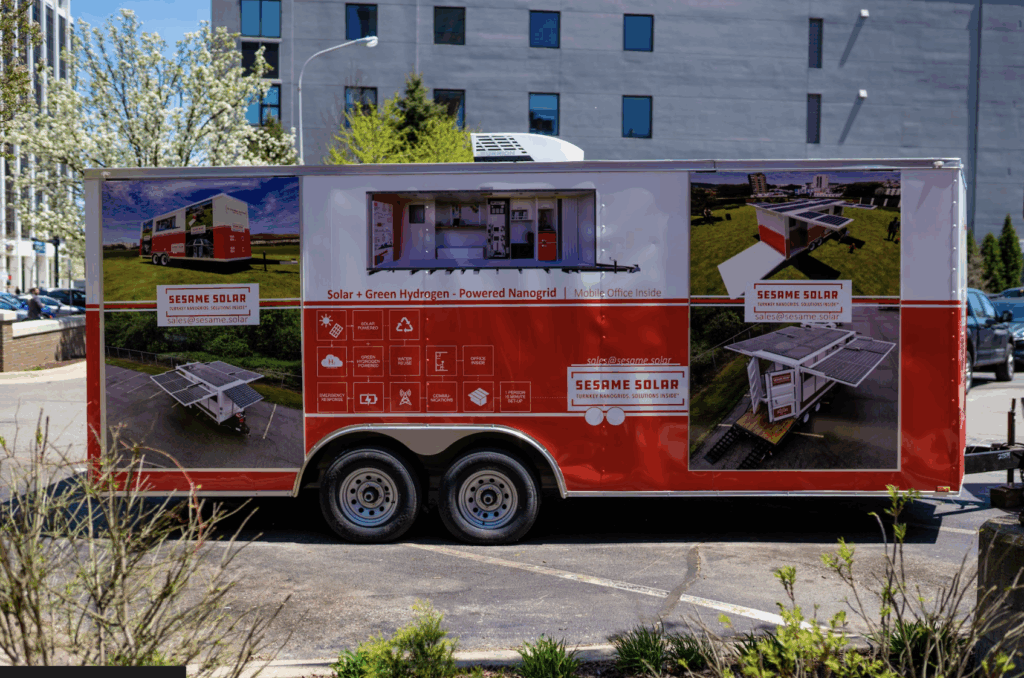
Sesame Solar, based in Jackson, Michigan, is pioneering a new model for clean, mobile power. The company’s self-generating “nanogrids” — compact, solar- and hydrogen-powered units that deploy in minutes — are designed to deliver renewable electricity anywhere it’s needed. From emergency response and telecom operations to defense and community resilience, the technology provides an alternative to the diesel generators that have long powered temporary and remote sites. SBN Detroit interviewed co-founder Lauren Flanagan about redefining energy resilience, the challenges of scaling clean power, and why Michigan is the right place to lead this transformation. Q: Tell me about Sesame Solar — what inspired it, and how did it begin? A: After Hurricane Katrina, it hit me that extreme weather was becoming more frequent and more severe. And it was clear that government alone couldn’t handle the response. Every time disaster struck, I saw diesel generators being deployed to restore power, even though they caused massive environmental damage and logistical problems. That was the “aha” moment. I wanted to create a clean, mobile, self-generating power solution that could replace diesel. Q: How did that vision turn into the nanogrid model you use today? A: We realized that to change behavior, we had to make the better solution easier — something that could be deployed quickly, run cleanly, and adapt to different uses. We created a model that is modular and scalable, like Lego blocks. The nanogrids can power emergency offices, communications systems, field kitchens, drone refueling stations and more. The first units were deployed in the Caribbean after Hurricane Maria (2017), and they’re still operating today. From there, we’ve expanded across the U.S. — our systems are used by cities from Ann Arbor to Santa Barbara, and by telecom companies like Comcast, Cox, and Charter. Q: What kinds of situations demonstrate the greatest need for deployable clean power? A: Disaster recovery is one, of course, but our nanogrids are also being used anywhere grid power is unreliable or unavailable. The Air Force and the Army Corps of Engineers use them for unmanned operations, including surveillance and communications. We’ve also developed hydrogen-powered drone refueling stations with partners like Heven Aerotech. We’re seeing use cases across emergency management, defense, telecommunications, and community resilience — really, any situation where people need dependable, sustainable power quickly. Q: What challenges come with making energy both mobile and self-generating? A: It’s hard. To make something that sets up in 15 minutes and runs off solar and hydrogen, you need deep integration between hardware, software, and automation. We hold multiple patents, and our engineering team has solved challenges around rapid deployment, autonomous energy management, and safety. Every component — from insulation and vapor barriers to passive energy systems — contributes to efficiency. We have a unit deployed with the Army Corps of Engineers that’s been running unmanned for nearly a year with zero downtime. Imagine if a diesel-powered generator was running for that long. And maintenance of the unit consists of blowing sand off the panels twice a year because it’s located in the desert. That’s the level of reliability we’re aiming for. Q: How do you measure the environmental benefits compared to diesel generators? A: We quantify it in CO₂ savings. Our software platform tracks every kilowatt generated and consumed, calculating gallons of diesel avoided and total emissions saved in real time. It’s data our customers can use to validate their sustainability goals. Beyond emissions, diesel generators are noisy, polluting, and often dependent on supply chains that fail during crises. A self-sustaining nanogrid avoids all of that. Q: You moved the company from California to Michigan. Why build here? A: Honestly, I wouldn’t have opened this business in California. Michigan offers lower operating costs, a strong manufacturing base, and deep expertise in mobility and electrification — all areas that align with our long-term vision to make nanogrids more automated. The state has a world-class supply chain. We buy from companies like Alro Steel, we hire engineers locally, and we also source as locally as possible. I like to say we take a farm-to-table approach to manufacturing: how much can we build right here in Michigan? Q: What opportunities does this create for Michigan’s workforce and suppliers? A: We’re growing quickly — we have 23 employees and are hiring more technicians now. The roles require multidisciplinary skills like fabrication, welding, mechanical, and electrical. Increasingly, there are opportunities for advanced computer-assisted and AI-driven roles too. Michigan’s existing fabrication and automotive supply chain is a huge advantage. As that sector transitions toward electrification, it’s opening new opportunities for clean-tech manufacturing to scale. Q: What does the next decade look like as extreme weather becomes more frequent and the energy transition accelerates? A: It’s predicted that we’ll see a significant number of billion-dollar weather events in the next five or six years. Even as we make progress in slowing climate change, we’ll still need to adapt. That’s where mobile, renewably powered systems can come in. They bridge the gap between infrastructure and immediacy — bringing clean energy wherever it’s needed. I’m an optimist. I believe the technology exists to stabilize the climate, but it won’t get easier before it gets better. At Sesame Solar, our mission has always been about people, planet, and profit. It sounds a bit fluffy, but we are working to help communities, companies, and governments prepare for the future — not just by responding to disasters, but by rethinking how we power the world in the first place. Be sure to subscribe to our newsletter for regular updates on sustainable business practices in and around Detroit.
Rebuilding Electric Motor Manufacturing in Michigan
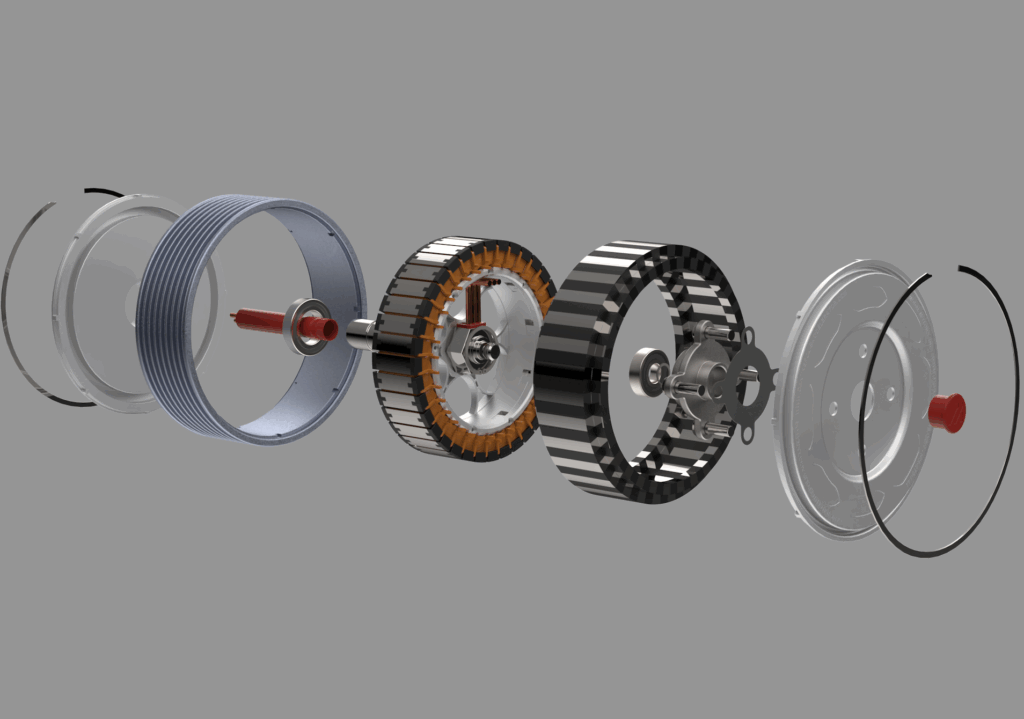
Farmington Hills-based Modal Motors designs and manufactures next-generation electric motors engineered for high torque density, simplified assembly, and scalability in the United States. The company’s transverse-flux architecture reduces reliance on rare-earth materials while improving efficiency and performance across mobility applications, including EVs, drones, and industrial equipment. By rethinking both motor design and manufacturability, Modal Motors aims to strengthen domestic supply chains and support the growing electrification industry. The company recently raise $2 million in a seed funding round that it will use to accelerate its transition from R&D and prototyping to full-scale manufacturing in Michigan. SBN Detroit interviewed company founder and CEO Michael Steenburg about reshoring manufacturing, supporting Michigan’s EV leadership, and the future of electric propulsion. Q: Give us the brief origin story. What motivated the creation of Modal Motors? A: Over the last 25 years, American manufacturing has moved steadily overseas. As electrification has accelerated, we’ve seen a slow-moving shift where innovation happens here, but production doesn’t. Early in my career, I focused on improving fuel efficiency in vehicles. That eventually led to developing my own motor IP. When I looked at the manufacturing reality, it was clear: If we wanted the U.S. to truly compete in electrified mobility, we needed to rethink how motors are built. Instead of designing motors that require extremely labor-intensive processes and then shipping production to Asia to reduce costs, we asked: What if we design motors that are simpler and more affordable to build here in the U.S. from the start? Modal Motors is about empowering a domestic ecosystem — not just for cars, but also for tools, industrial equipment, and new sectors like drones. We want to help restore middle-skill manufacturing jobs and global competitiveness. Q: As the EV transition accelerates, what strengths can Michigan leverage in next-generation motor technology? A: Michigan is uniquely positioned to lead in electric motors. We already have the materials: Magnets, copper, aluminum, and magnetic steel — all core materials for electric machines. We have the fabrication capabilities and the workforce tuned to advanced manufacturing. The state has done this before. During WWII, Michigan transformed its industrial capacity seemingly overnight. When you combine supply chain + skilled labor + materials, Michigan can support EVs from raw resource to finished motor. Q: Your motors use a transverse-flux architecture. What limitations of conventional motors drove that change? A: Traditional motors are built from dozens of wound poles — for example, 36 windings, each requiring extremely precise tolerances. In EV motors, the most important factor is the air gap between rotor and stator. Every tolerance stack-up tightens that gap, making efficiency dependent on expensive precision manufacturing. That’s where the U.S. loses cost competitiveness. Either you buy extremely complex machinery or you rely heavily on manual labor, and both increase cost. We simplified the architecture. Our drone motors have about 10 components. Fewer parts means faster assembly, fewer labor hours, and lower costs — while allowing us to pack in more conductive material like copper, which directly boosts efficiency. We also design for improved heat removal, which is critical because permanent magnets degrade if they overheat. It’s not magic. It’s applying well-understood engineering principles to reshape manufacturability. Q How does torque density influence vehicle performance and design flexibility? A: Higher torque density means more power in a smaller package. That gives automakers more freedom — lighter powertrains, more cabin space, and better range due to reduced mass. It also lets us rethink where motors go. You can decentralize propulsion — wheel motors are a great example — and that opens new possibilities for efficiency and architecture. Q: What role do motor efficiencies play in lifecycle sustainability? A: Once an EV is in use, there are no tailpipe emissions. Lifecycle emissions are determined by everything leading up to that point — and the more efficient the motor, the faster you reach carbon parity with internal combustion. The energy pathway matters too. Electricity can be generated cleanly and used directly in propulsion with relatively little loss. That’s fundamentally different from extracting, refining, transporting, and burning fuel. And increasingly, people are powering their vehicles at home with solar — something impossible with fossil fuels. Q: What makes a motor truly “greener” end-to-end? A: Cradle to grave matters. How materials are mined. How they’re processed. How much waste is generated. We design for net-shape molding, which means essentially zero scrap — compared to stamped laminations where 40–60% of material can become waste. Even if metal is recycled, that still requires energy. Eliminating waste helps both sustainability and cost, which reinforces competitiveness for U.S. manufacturers. Q: Where do you see your earliest applications? A: Right now, off-highway vehicles, low-speed on-road vehicles, and especially drones. We’ve seen enormous demand in aerospace and defense because propulsion reliability and supply-chain security are strategic priorities. Drones were the first to fully embrace emerging motor architectures. Q: How open are OEMs to integrating new propulsion architectures? A: It varies. Drone manufacturers are agile — they don’t have decades of legacy powertrain design to work around. Automakers are more cautious, but they’re increasingly interested in wheel-motor architectures because removing the centralized drivetrain frees up vehicle space and simplifies mechanical systems. There’s also a generational shift. Younger buyers are embracing smaller, more efficient vehicles. That shift aligns well with distributed propulsion. Q: What breakthroughs do you expect next in electric motor development? A: I see two major drivers. First, new materials. AI-accelerated materials science will unlock stronger, cooler-running, more recyclable magnetic and structural alloys — including non-rare-earth alternatives. Second is new manufacturing automation. Robotics — including humanoid robots — will soon handle complex manual steps at high speed and precision, enabling U.S. factories to operate 24/7. When you combine those, motor technology and production are both heading toward dramatic gains in efficiency and sustainability. Be sure to subscribe to our newsletter for regular updates on sustainable business practices in and around Detroit.
Circular by Design
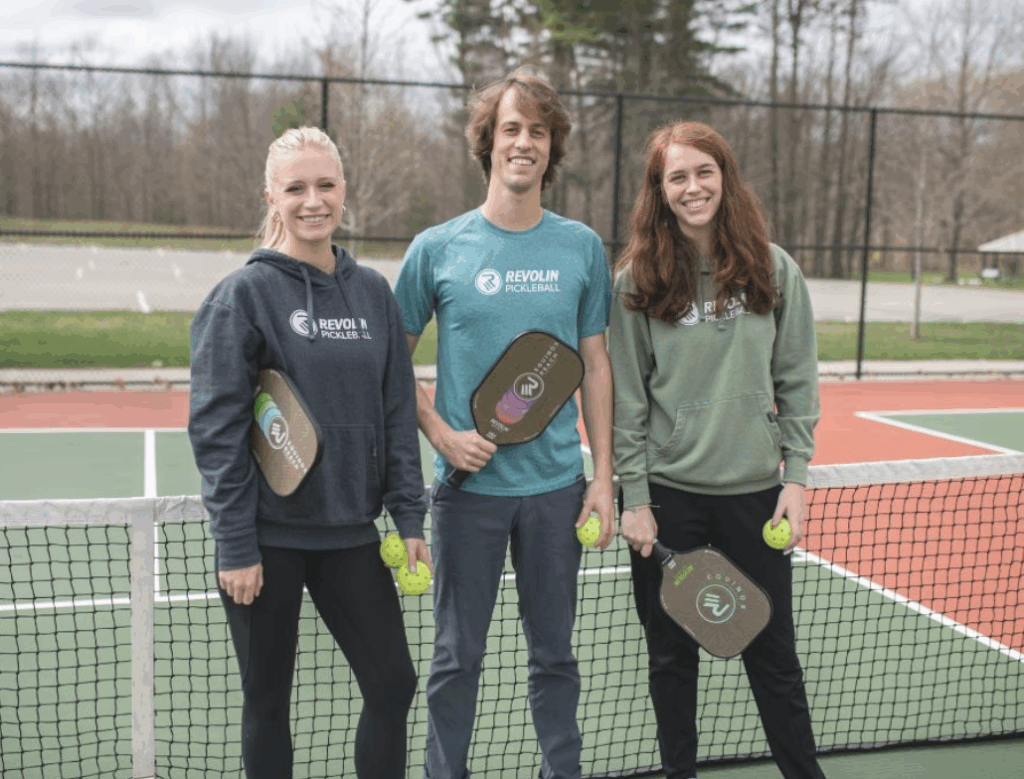
Revolin Sports, a Holland, Michigan-based startup founded by siblings Hugh and Greta Davis, is aiming to change how sports equipment is made — starting with the fastest-growing sport in America: pickleball. The company is using renewable materials, energy-efficient manufacturing, and recyclable design to lower the environmental footprint of high-performance paddles. SBN Detroit interviewed Hugh Davis, cofounder of Revolin Sports, about how sustainable materials, circular manufacturing, and local partnerships are reshaping the future of sporting goods manufacturing in Michigan and beyond. Q: What first motivated you to build a sustainable paddle brand? A: I started playing pickleball in high school and eventually started competing semi-professionally. As a sponsored player, I kept noticing a pattern — paddles were breaking constantly. My friends’ paddles were breaking, too, so I began repairing them in my garage. That side hustle evolved into a deeper curiosity about how to make paddles better. I studied engineering at the University of Michigan, which gave me insight into materials and design, and I realized there was an opportunity to build something higher performing and better for the planet. Ultimately, my vision was to revolutionize equipment by using natural fiber and renewable linens – that’s where the name Revolin comes from. Between 2015 and 2020, my sister and I built and tested a few hundred prototypes, experimenting with new combinations of renewable materials like flax and hemp. Eventually, we landed on a formula that delivered superior performance with less vibration and weight — and dramatically reduced emissions. That became the foundation for Revolin, which we launched in 2020 with the world’s first 98% reduced-emission flax paddle. Q: Most high-performance paddles today use carbon fiber, which has a large carbon footprint. How do you assess and reduce that impact? A: Most paddles are made from carbon fiber or fiberglass, and those materials definitely have value. They’re lightweight, stiff, and durable. But they’re also petroleum-based, energy-intensive to produce, and nearly impossible to recycle. We evaluate each material’s embodied emissions — how much carbon it takes to produce — and calculate the footprint per paddle based on the exact quantities used. Our data shows a 50-75% reduction in greenhouse gas emissions per unit compared to traditional paddles. We also manufacture in the U.S. using primarily U.S.-sourced materials. That reduces transportation emissions and gives us control over our process, from sourcing to final product. Most of our emission reduction comes from our material choices — how we layer and combine them to improve both environmental impact and performance. Q: You use BioFLX™ (hemp/flax composites) and LavaFLX™ technologies. What are those materials, and how did you develop them? A: BioFLX™ refers to our biocomposite made from hemp and flax — two plants that grow tall and fast and contain some of the strongest natural fibers on Earth. We extract, weave, and layer those fibers in specific orientations, then press them together using a low-energy resin system. The result is a lightweight, rigid panel that reduces vibration and is fully recyclable. LavaFLX™ works similarly but uses fibers derived from volcanic rock. The rock is melted, purified, and extruded into filaments thinner than human hair. It’s less energy-intensive to process than carbon fiber and easier to recycle, while offering exceptional power and spin. We also combine the two to create BioFLX™ Plus — a hybrid that balances strength, elasticity, and environmental benefits. We’ve patented how we layer and weave these materials, and we’re already exploring how to use them in other industries like skis, snowboards, and paddleboards. Q: Where do you see the biggest energy or waste inefficiencies in paddle production? A: Two main areas: waste and durability. In traditional sporting goods manufacturing, roughly one-third of materials end up as scrap. A lot of that comes from cutting patterns or using oversized molds. Most of the industry’s production is overseas, so there’s also significant energy and shipping waste. We focus on small-batch production to minimize scrap and leverage leftover material wherever possible. Then there’s product lifespan. Some players go through a dozen paddles a year because they’re not built to last. We design ours for durability — and we are piloting a program to refurbish and recycle paddles at end-of-life. Q: What steps have you taken to make your packaging more sustainable? A: We keep packaging simple and circular. All of it is made from recycled cardboard that’s fully recyclable again. We print with algae-based inks, which have a lower footprint and fewer toxins than petroleum-based inks. And we use minimal packaging — no excess plastic or unnecessary filler. Q: How does your paddle recycling program work? A: We recently launched a pilot program with our Rise paddle, which was designed to be nearly 100% recyclable. Once the grip wrap is removed, we can grind the rest of the paddle and turn it into pellets for injection molding or even filament for 3D printing. Customers who return their paddles get a discount on a new one, and we reuse the material to create other products. The program is still in its beta phase, but we’re collecting paddles and testing processes now. Within the next year or two, we plan to scale it into a full circular system. Q: What are the biggest challenges you face? A: Cost is definitely one. Our materials are unique and sourced from small, innovative suppliers. Building everything in the U.S. adds cost too, but it allows us to control quality, innovate quickly, and maintain transparency. Availability can also be challenging. These materials are newer, niche, and sometimes hard to find in the right weights or thicknesses. Q: How do consumers respond to the higher price point? A: It depends. Some buyers come to us because of sustainability, others because of performance. Once players feel the paddle — the lack of vibration, the control, the extra spin — they recognize the performance value. It’s not just a sustainable paddle; it’s a better paddle. We’ve worked hard to keep pricing competitive without passing our higher costs directly to consumers. And once people learn
Advancing Sustainability
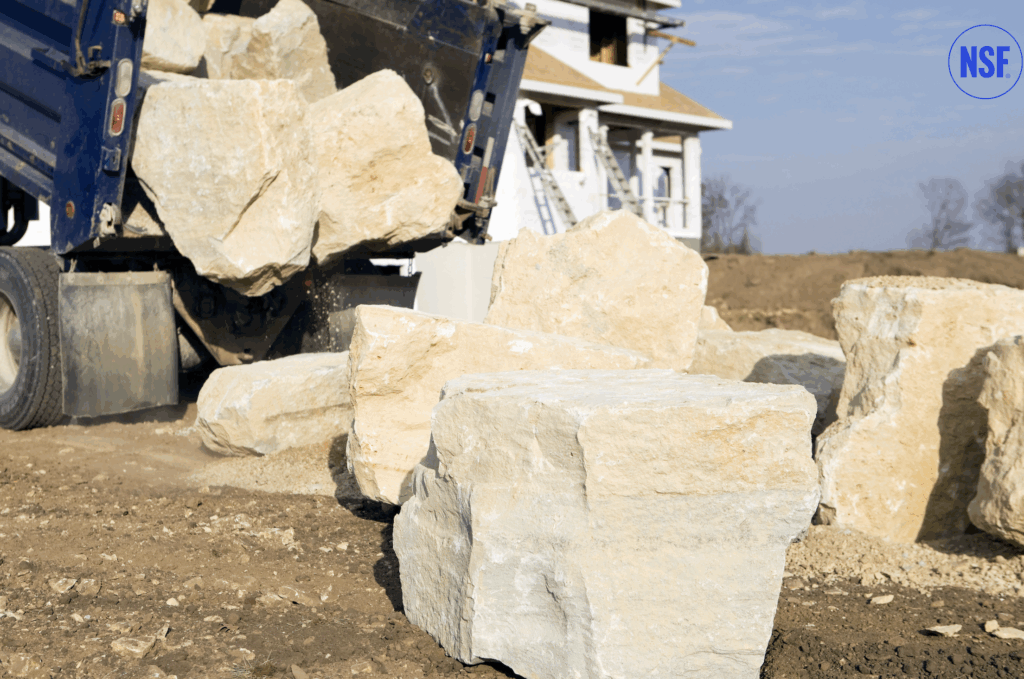
Ann Arbor-based NSF is a 501(c)(3) nonprofit that develops public health standards and provides auditing, certification, and training across industries ranging from food and water to consumer products and manufacturing. Its work often intersects with sustainability, helping businesses measure environmental performance and verify progress toward their goals. SBN Detroit interviewed Justin Brown, senior manager of sustainability & product verification at NSF, about the challenges companies face in advancing sustainability, the opportunities emerging in Southeast Michigan, and the role of credible verification in driving meaningful progress. Q: NSF is well known for setting public health standards globally. How do you translate that expertise into helping businesses meet sustainability and environmental goals? A: NSF has applied independent, science-based rigor for decades — starting in water and food safety more than 80 years ago — and we’re bringing that same approach to sustainability. Over the past year, we’ve renewed and expanded our standards, developing lifecycle-based sustainability criteria across water, textiles, and building materials. Beyond standards, we provide auditing, certification, and training to help organizations measure ESG performance and translate sustainability goals into credible, verifiable outcomes. Q: From your perspective, what are the biggest sustainability challenges companies in Southeast Michigan are facing today? A: It comes down to businesses balancing the competitive landscape with rising expectations from regulators, investors, and consumers. In this region, with its deep roots in mobility and manufacturing, the challenges include managing environmental impacts across complex supply chains, ensuring accurate reporting, and adapting to shifting regulatory requirements. Companies also face pressure around chemical safety, waste reduction, and responsible sourcing. At the same time, Southeast Michigan’s legacy in manufacturing creates opportunities to innovate and lead in sustainable practices. NSF helps organizations address these challenges with tools like ESG verification services and product transparency standards that provide measurable criteria to help them progress forward. Q: Many businesses struggle to balance cost and sustainability. What approaches or frameworks do you advise that help companies align financial performance with environmental responsibility? A: Sustainability and affordability can work hand in hand. The more resources a company saves through efficiency measures, the more profitable it can become. Recycling, composting, and other circular practices can create new revenue streams, while energy-efficiency certifications and improvements reduce both environmental impact and cost. These steps don’t just save money — they differentiate companies in competitive markets. Increasingly, investors also reward businesses that integrate sustainability into their core operations, because it signals long-term resilience and accountability. When sustainability is embedded across daily decisions, it strengthens financial performance, builds trust, and reinforces that environmental impact is a true priority. Q: NSF works across industries — food, water, consumer products, and beyond. Where do you see the greatest opportunities right now for businesses to make measurable sustainability gains? A: The strongest opportunities are where transparency and accountability meet. Consumers are demanding to know more about what they’re buying, and companies that can demonstrate credibility through certifications or reporting stand out. In food and retail, certifications like organic or EPA Safer Choice are increasingly important. In manufacturing, standards such as NSF 375 for water-contact products help demonstrate leadership to both regulators and customers. We’re also seeing momentum in chemical safety, carbon accounting, and lifecycle reporting. In Michigan specifically, water stewardship and manufacturing innovation represent major opportunities for businesses to lead. Across industries, credible reporting and product declarations allow companies to show stakeholders that their commitments are real and measurable. Q: How do you see the conversation around sustainability shifting from “compliance” to “innovation”? A: Compliance is no longer the end goal — it’s the baseline. Businesses are increasingly using sustainability as a launchpad for innovation, whether that’s redesigning products to minimize environmental impact, reducing hazardous materials, or creating circular pathways that keep materials out of landfills. A good example is our collaboration with the Global Electronics Council to launch a sustainable electronics standard. Standards like this don’t just respond to regulation — they actively drive innovation and competitiveness. For companies, this shift means sustainability isn’t just about avoiding risk; it’s about uncovering entirely new opportunities. Q: Can you share examples of how businesses are leveraging sustainability as a driver of new opportunities? A: Sustainability is a market differentiator, particularly in industries like automotive. Globally, consumers are paying closer attention to the environmental impact of the products they purchase. Verification and reporting give companies a way to validate their performance, communicate their values, and build loyalty. When businesses can prove their claims with credible third-party data, consumers reward them with trust, and that drives growth. Q: In your work with companies of all sizes, what distinguishes those that succeed in embedding sustainability deeply into their operations from those that struggle? A: It starts with leadership buy-in. When sustainability is treated as a real priority from the top down, it creates employee engagement and accountability throughout the organization. Successful companies also consistently measure performance and use credible tools like ESG reporting, lifecycle assessments, and social audits. Those that struggle often lack reliable data or the ability to collect it, which makes progress difficult. Embedding sustainability into daily decisions, backed by accountability, is what creates lasting impact. Q: What advice would you give to Southeast Michigan companies that want to prepare for future sustainability expectations from regulators, customers, and investors? A: Start by developing a deep understanding of your current practices, products, and services, and identify where the gaps are relative to both current regulations and emerging expectations. Then, build in measurable tools to track and verify progress. Regulators, customers, and investors are all looking for credible third-party validation, and leveraging auditing, reporting, and certification can help companies build resilience and strengthen their position in Michigan’s evolving sustainable economy. Companies that take these steps today will be better prepared to compete — and thrive — tomorrow. Be sure to subscribe to our newsletter for regular updates on sustainable business practices in and around Detroit.
Working to Build a Lower-Carbon Auto Industry
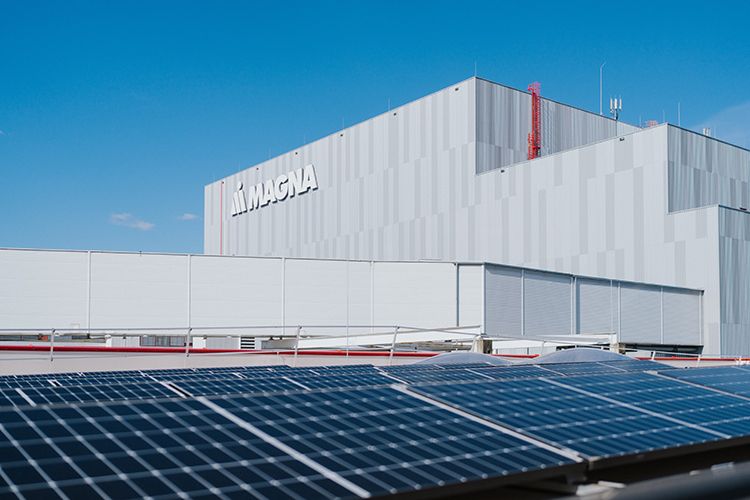
Magna International is one of the world’s largest automotive suppliers, with more than 350 manufacturing sites and engineering centers globally, including a strong presence in Southeast Michigan. The company plays a critical role in shaping the future of mobility, from advanced materials to vehicle systems, while also driving ambitious sustainability goals across its supply chain. Validated by the Science Based Targets initiative, Magna’s commitments include cutting emissions, embedding circular design principles, and working with thousands of suppliers worldwide to achieve net zero. SBN Detroit interviewed Ahmed Elganzouri, Magna’s Global Director of Sustainability and Energy, about the challenges, milestones, and opportunities that come with advancing sustainability in the auto industry. Q: Magna has committed to addressing Scope 3 emissions via supplier engagement. What are the biggest challenges you’ve encountered in getting suppliers to commit to decarbonization, and how are you overcoming them? A: The challenge is scale. We work with thousands of suppliers across the globe, and each of them is at a different stage in their sustainability journey. Some have already set ambitious climate targets and are reporting progress transparently, while others are just beginning to build the internal capability to measure their own emissions. What we’ve found is that education and collaboration are key. We can’t simply mandate change—we have to support suppliers with tools and data. Our approach is to set clear expectations, share best practices, and partner with those who want to learn. It’s not always easy, but we believe that raising the bar across the entire value chain is essential if the industry is going to reach net-zero. Q: Can you walk us through the roadmap Magna has developed for achieving net-zero, particularly for Scope 3? What are the key milestones and metrics you’re tracking to hold yourselves and your suppliers accountable? A: Magna’s net-zero target is validated by the Science Based Targets initiative, which gives us both credibility and accountability. We’ve already set near-term goals to cut our Scope 1 and 2 emissions by 42% by 2030 from a 2021 baseline, and for Scope 3 we’ve committed to a 25% reduction by 2030. Scope 3 is more complex since it includes purchased goods, use-phase vehicles and end-of-life treatment. To drive progress, we’ve established clear milestones: Supplier engagement: Beginning this year, suppliers are required to provide ESG (human rights and labor) reporting, with carbon reporting becoming mandatory next year. Transform Auto program: We’ve launched this initiative to bring renewable electricity procurement options directly to suppliers, making it easier for them to decarbonize. Carbon and ESG data collection: We’ve transitioned from CDP supply chain reporting to more targeted tools—M2030 for carbon data and the NQC SAQ survey for ESG performance. Sustainable materials: We’re rolling out a strategy that advances the use of low-carbon, bio-based, and recycled materials, while also prioritizing end-of-life recyclability. Target-setting: We continue to encourage and track the number of suppliers setting SBTi-aligned targets. Q: What are examples of how design for disassembly is being implemented, so that products are easier to recycle or repurpose? A: We see materials innovation as one of the most exciting levers for reducing our footprint. For example, we’ve developed EcoSphere foam and trim for seats, which combines recycled and bio-based content without sacrificing performance. Another example is our natural fiber door carrier, which replaces glass fibers with renewable fibers while maintaining structural integrity. On design for disassembly, our engineers are looking at modular systems that simplify end-of-life separation. In our seating division, for instance, we’ve developed concepts where metal, plastic, and foam can be detached more easily, enabling higher-quality recycling. It’s about thinking through the full lifecycle from the earliest stages of design—not just how something performs in the vehicle, but what happens to it when the vehicle’s life is over. Q: What do you see as the biggest industry-wide challenges to sustainability right now? A: The biggest challenge is alignment. The auto industry is global, and the pace of change varies dramatically across markets. Some regions move quickly with aggressive regulations and incentives, while others lag. That makes it difficult to scale sustainable technologies at speed and cost. Another challenge is access to renewable energy—manufacturers can only decarbonize so much if the grids we rely on are still carbon-intensive. And finally, financing the transition is no small feat. Electrification, new materials, and circular processes all require upfront investment. The industry has to work together—OEMs, suppliers, governments, and investors—to share that risk and accelerate the payoff. Q: What role do machinery upgrades and optimization of equipment play in energy-efficiency planning? A: A big role. Roughly two-thirds of our manufacturing emissions come from energy use, so making our operations more efficient is critical. That can be as simple as retrofitting lighting and HVAC systems, or as complex as upgrading presses, welders, and paint shops to consume less energy. We also run a global energy management program that identifies and shares best practices across our 350+ sites. On top of that, we’ve built into our operations requirement (MAFACT) a roadmap for how each division will decarbonize its heavy-emitting equipment and outline the challenges they face so we can provide targeted support. Q: How does integrating circular economy principles into product design interplay with cost, manufacturability, and performance? Circularity must work in the real world. That means balancing sustainability goals with safety, quality, and cost requirements. The lesson is that circularity doesn’t have to be at odds with manufacturability or cost—it can actually unlock efficiencies and open new markets. The key is embedding these principles early in the design phase so they aren’t seen as add-ons later. Q: How do changing global regulations and consumer expectations around sustainability affect your strategy? A: Regulations and consumer expectations are both accelerators. Increasingly, consumers want vehicles that reflect their values, and regulators are setting ambitious targets that raise the floor for the entire industry. For Magna, that’s an opportunity: we can differentiate by delivering sustainable innovations that help our customers meet or exceed those expectations. As for policy, we’d welcome more harmonization. Right now,
Michigan-Founded Tech Company, Motmot
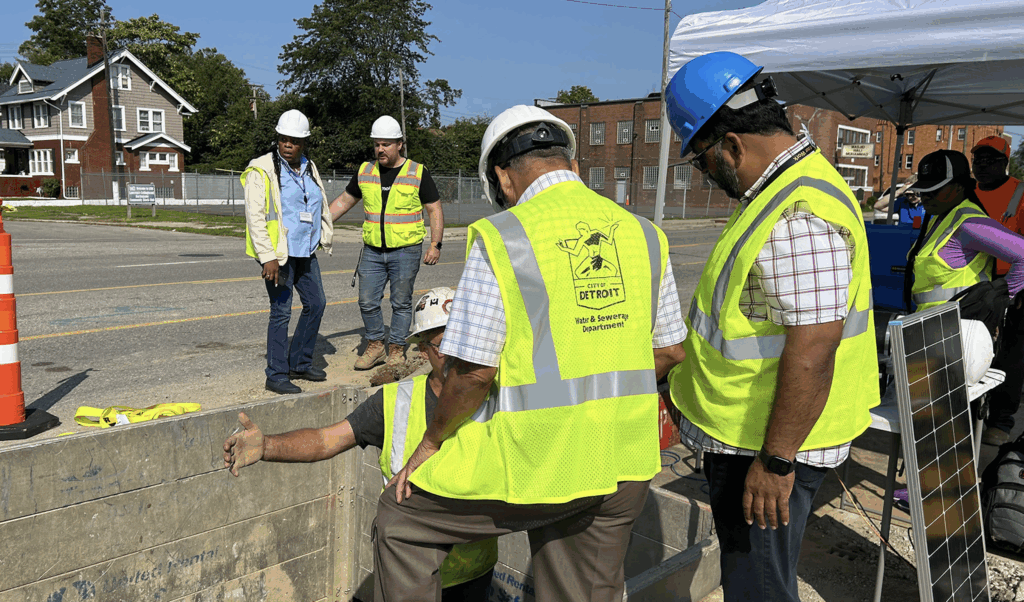
Aging drinking water systems are one of Southeast Michigan’s most pressing infrastructure challenges. Many pipes in the region date back to World War II, built with materials now at the end of their service life. Combined with harsh freeze-thaw cycles and decades of underinvestment, the result is frequent leaks, water main breaks, and costly emergency repairs. Motmot, a startup located in Detroit, is tackling this challenge by deploying robotic technology directly inside live water mains. By providing utilities with condition data they’ve never had before, Motmot aims to shift water infrastructure management from reactive crisis response to proactive planning. SBN Detroit interviewed Elliot Smith, the company’s CEO and Co-Founder, about Southeast Michigan’s unique vulnerabilities, the role of technology in creating more equitable water systems, and how utilities can prepare for the future of smart infrastructure. Q: From your perspective, what makes Southeast Michigan’s drinking water systems especially vulnerable? A: Southeast Michigan has some of the oldest drinking water systems in the country. Much of the pipe was placed around World War II, often using cast iron that is now at the end of its life. Add in our freeze-thaw cycles, which cause pipes to expand and contract, and the risk increases. We also have a history of underinvestment — the goal has long been to replace about 1% of the system per year, but that hasn’t happened consistently. In the Detroit metropolitan area alone, there are 13,000 to 14,000 miles of water main pipe. When one failure occurs, it can cascade into emergency work for other cities connected to the same transmission systems. Q: How does your technology change the timeline for cities and utilities — shifting from reactive maintenance to proactive decision-making? A: Traditionally, utilities only learn about problems once a water main fails. That means flooding, emergency repairs, added operational expenses, and public safety risks. What we’re fighting against is that cycle. Our technology provides data before mains fail. It’s about making the unknowns known and helping cities get ahead of the problem. Q: How do you see technology helping ensure that water system improvements are not only efficient but also equitable? A: Equity starts with visibility. Communities with fewer resources often can’t afford inspections, which means they experience more frequent issues. If we can lower the barrier to entry and make inspections affordable, every community has the chance to see what’s happening in their system. That helps mitigate risk and plan for future projects. At the same time, state revolving funds and stronger datasets can help overburdened communities secure the resources they need. Q: Where is Motmot in development today? A: We’re in the pilot stage now. We’ve kicked off our first pilot with the city of Detroit – I was especially happy that Detroit was the first city to take a chance on us. We are working through the American Water Works Association network. We already have more than 50 communities on our waiting list. That said, we’re being very intentional about not moving too fast. We want safe, effective pilots for every community we work with. My goal is to have 10 pilots started by the end of the year. Q: Beyond financial costs, what are the biggest environmental consequences of undetected water loss? A: Water loss is significant. A leak means residents are paying for water they never actually use. But it’s not just lost water — it’s wasted energy and chemicals as well. That water was treated, pumped, and disinfected before it ever leaked into the ground. In Michigan, reducing water loss directly supports our sustainability goals by conserving Great Lakes water and reducing the energy tied to treatment and pumping. Q: What do you see as the biggest hurdles to widespread adoption of smart water infrastructure? A: Risk perception is one. This is a relatively new technology, and water systems are old and often archaic. The mentality of “if it’s not broke, don’t fix it” is strong — but the truth is, much of the system is broken. We also have to prove our technology won’t contaminate systems or interfere with daily operations. And public works departments are already stretched thin. They’re chasing main breaks and doing emergency repairs, so adding another piece of technology can feel like a burden at first glance. Q: Motmot is entering a highly regulated, risk-averse sector with a disruptive idea. What lessons can other businesses learn from your approach? A: It really comes down to partnerships and credibility. We started incubating at the university level, then built credibility through the American Water Works Association. You have to build trust in the ecosystem — with regulators, utilities, and stakeholders. If you have a big idea, you can’t just drop it into the market. Plant seeds, engage stakeholders, and earn advocates who will vouch for you. Q: What do you see as the next frontier in smart water infrastructure — and how might Michigan businesses and communities prepare? A: Integration. In industries like oil and gas, systems like inspections, billing, and modeling are linked because there’s money to be made in efficiency. In the municipal space, those systems are often siloed. Breaking those silos down — connecting engineering departments, utilities, and technology platforms — is the next frontier. Michigan is well positioned to lead in this. We have a concentration of utilities, strong players like the Great Lakes Water Authority, and research universities investing heavily in this space. If we can integrate and apply technology in practical ways, not just in pilot projects, we can move from innovation theater to real-world results. Q: When you talk with water leaders across the U.S., what pain points come up most often? A: There are three that come up repeatedly. First, aging infrastructure — in some places, water mains date back to the 1840s. Second, visibility. Public works is an underappreciated industry. People see parades and fireworks, but not the crews that make daily life possible. That lack of visibility has led to chronic underinvestment. Third, affordability. This space has
AquaAction Chooses Detroit for U.S. Headquarters
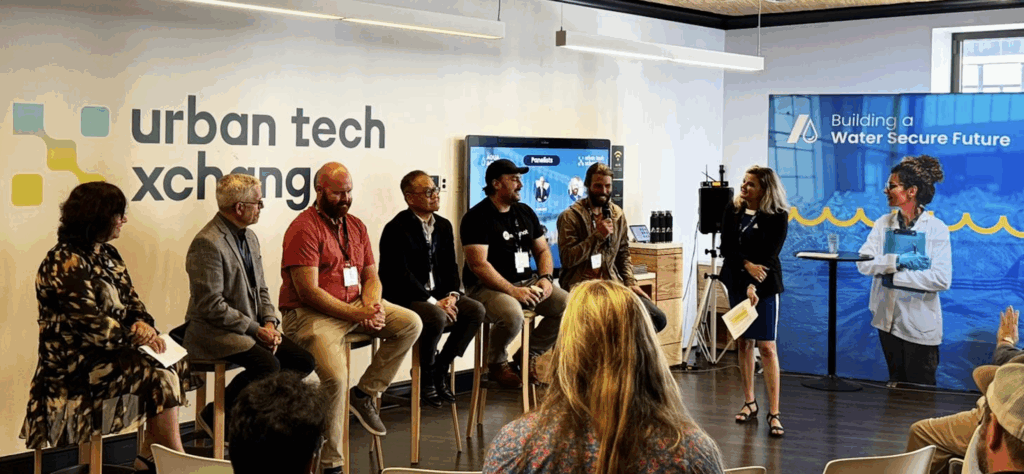
Founded in Canada, AquaAction is a nonprofit dedicated to tackling freshwater challenges through innovation and entrepreneurship. Now, the organization has chosen Detroit as its U.S. headquarters — a choice made because of Southeast Michigan’s role as a steward of the Great Lakes and a launchpad for water-tech solutions with global reach. Through initiatives like the AquaHacking and AquaEntrepreneur programs, AquaAction supports young innovators as they transform ideas into real-world technologies. SBN Detroit interviewed President Soula Chronopoulos about why Detroit was selected, the challenges and opportunities facing the region, and how water-tech could shape the next phase of Southeast Michigan’s economy. Q: What makes Detroit—and Southeast Michigan overall—a compelling region for water-tech innovation and freshwater stewardship? A: There’s a powerful momentum building in Detroit. The city has long been a symbol of resilience and grit, and now it’s fueling a new wave of entrepreneurial energy unlike what we’ve seen in other regions. With freshwater and climate change in the global spotlight, Detroit and Southeast Michigan are uniquely positioned. Sixty percent of the global economy depends on freshwater, and this part of Michigan sits on some of the world’s most critical reserves. The Great Lakes hold 21% of the planet’s freshwater resources, making them both a tremendous asset and a frontline target in the fight against climate change. This region has the chance to build something extraordinary — an economy rooted in water technology that can emerge directly from the Great Lakes. Q: How does AquaAction’s presence here help address regional freshwater challenges versus other parts of North America? A: When we considered where to establish our U.S. base, Detroit quickly stood out. Why? Because this area faces some of the toughest water challenges in the country: Flooding, affordability, pollution, and the legacy of crises like Flint. At the same time, there’s an eagerness here to be part of the solution. Detroit is a real-world test bed. If solutions can work here, they can scale across the U.S. and beyond. That’s why I often say the Midwest — and Detroit in particular — has the potential to become the Silicon Valley of water tech. Q: Can you discuss examples from the AquaHacking and AquaEntrepreneur programs that have particular relevance to Southeast Michigan? A: We ran our first Great Lakes binational challenge in 2023, and the response was incredible. Over 250 people joined, 45 teams were formed, and we launched 10 companies out of Michigan and the Great Lakes region. A few examples stand out: Motmot, based at Newlab, uses underwater robotics to detect leaks in aging water infrastructure. They’ve completed more than 40 projects. Myconaut uses bioengineered mushrooms aiming to remediate contaminated soil and keep lead out of drinking water. They recently won a grant and are testing their technology right here in Michigan. Other ventures include predictive flood modeling tools for cities and digital water management systems — both highly relevant to Southeast Michigan’s infrastructure challenges. In Quebec, similar efforts helped build a $200 million water-tech economy. Imagine what’s possible here. Q: How are young entrepreneurs being supported to translate their water-tech solutions into real-world applications in this region? A: We take a different approach. First, we’re a charity, but we’re also entrepreneurs ourselves. That perspective shapes how we build support for innovators. We’ve created an ecosystem where entrepreneurs can partner with subject-matter experts to validate their solutions. We then connect them with business leaders who help refine their models, open doors, and provide mentorship. Finally, we ensure they get into the field to test and apply their work. In Michigan, we anticipate engaging over 1,000 students and innovators in the coming years. We’re also focusing on communities including those with high unemployment. Q: What are the most pressing water-related challenges Southeast Michigan must address now—and in the coming years? A: Infrastructure is the biggest challenge. Much of it is aging and in need of major investment. Beyond that, flooding, pollution, and overall water management remain pressing concerns. There’s also the question of innovation. Detroit’s history in the automotive industry raises an important question: what comes next? I believe water technology can be the next major economic driver. The region already has supply chains, industrial capacity, and expertise that can be leveraged to build a world-class water-tech sector. Q: What barriers are startups or innovators encountering when bringing solutions to market locally? A: The greatest barrier is awareness. Climate conversations often focus on carbon, while water is overlooked. Yet 60% of the global economy runs on water. It is the lifeblood of everything, but we rarely treat it that way. That said, we’re beginning to see a shift. Policymakers, business leaders, and communities are starting to recognize the true value of water — not just as an environmental concern, but as an economic and security issue. Q: With U.S. headquarters now in Detroit, what kinds of economic or social impacts do you anticipate? A: There are two main areas of impact: Jobs and community. In Canada, we’ve helped create around 400 jobs, and we expect to do the same here. Every time we run an AquaHacking or AquaEntrepreneur program, we typically launch 10–20 companies. That means new businesses, new pilot projects, and new career opportunities. We’ve committed to the MEDC that within 12–18 months, we expect up to 35 new businesses to be launched, several pilot programs to get off the ground and at least 10–12 new staff hired at our Detroit office. Equally important is the community impact. Water is a human right, and it brings people together. We’re cultivating a new generation of innovators who see water not just as a resource but as a foundation for equity, resilience, and growth. Q: How do you envision long-term freshwater security, innovation, and resilience evolving in Southeast Michigan? A: Michigan is at a turning point. Just as it once led in mobility, the state can lead in water — in quality, flood management, pollution control, and technology development. The region has the knowledge, the infrastructure, and the industrial base to
